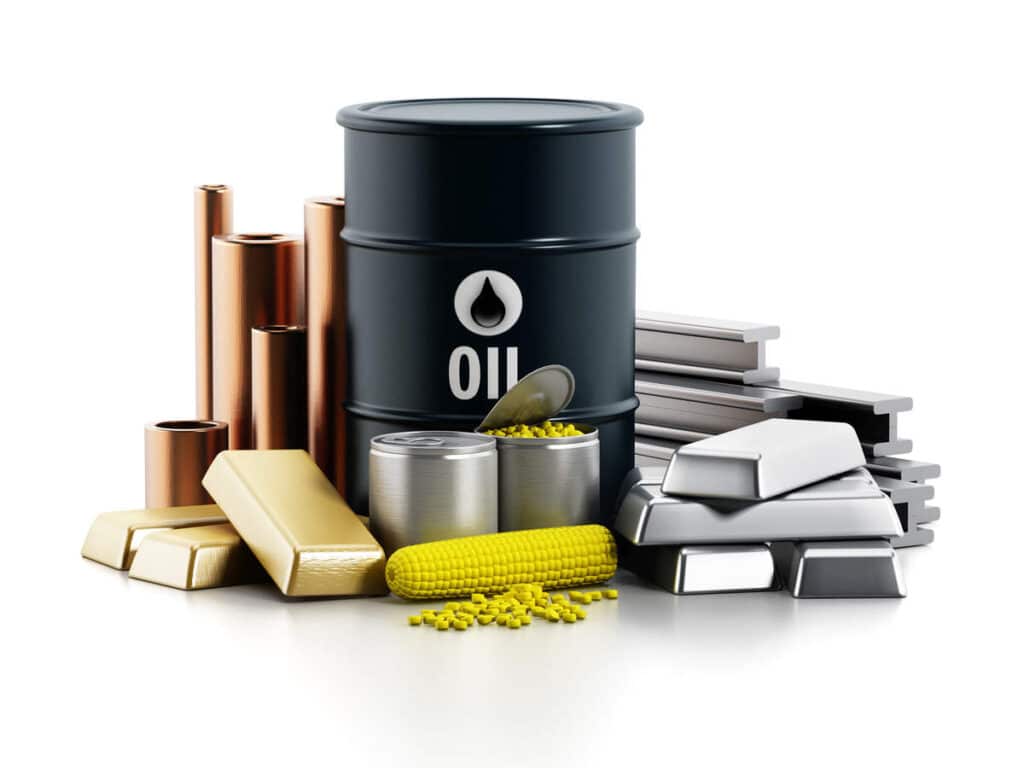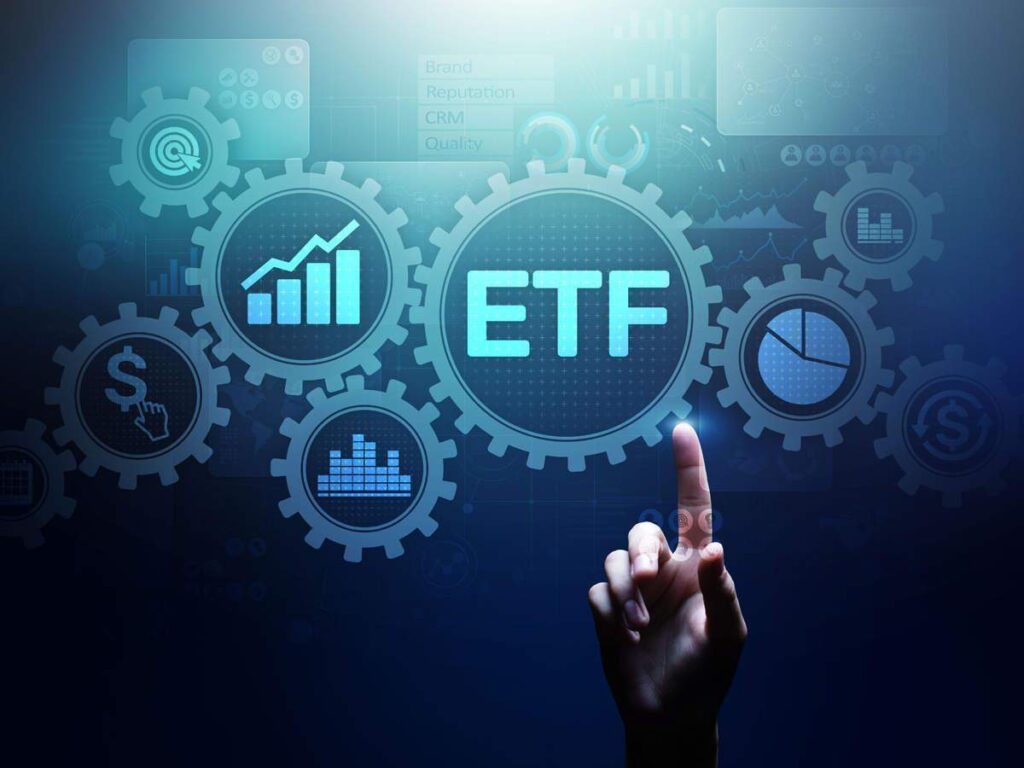How to invest in commodities
Commodities are the raw materials and resources that are used as the building blocks of production, manufacturing, and consumption. Retail investors can speculate in commodities as an asset class of investments through various methods including Contracts for Difference (CFDs), Exchange Traded Funds (ETFs) and even equities.
Here we explain what commodities are, the various ways that they can be traded and also what moves commodity prices. Are they a suitable addition to a portfolio? Let’s take a look.

What are commodities?
Commodities are the raw materials of production or food. They come in a variety of forms that are grouped into either hard or soft commodities.
“Hard” commodities are metals, minerals and energy that are mined or extracted from deep underground.
“Soft” commodities are basic food ingredients or materials. These are grown, harvested or reared at ground level.
Here’s a list of some of the popular commodities that investors can get exposure to.
| Hard commodities | Soft commodities | ||
|---|---|---|---|
| Types: | Metals, minerals and energy | Types: | Agricultural food, materials |
| Production: | Mined, extracted | Production: | Grown, harvested, reared |
| Examples: | Gold | Examples: | Wheat |
| Silver | Corn | ||
| Copper | Coffee | ||
| Iron Ore | Sugar | ||
| Nickel | Orange Juice | ||
| Diamonds | Pork, Cattle | ||
| Crude Oil | Lumber (wood) | ||
| Natural Gas | Cotton | ||
Commodities trading
Physical commodities and their derivatives (futures and options) are traded at exchanges around the world. The major exchanges in the US are now all owned by CME Group. The Chicago Mercantile Exchange (CME), Chicago Board of Trade (CBOT), New York Mercantile Exchange (NYMEX) and the Commodity Exchange (COMEX) all come under the CME Group umbrella. The London Metal Exchange (LME) is the place for trading commodities in London.
It is on these exchanges that industrial companies, physical market traders or proprietary trading desks will buy and sell commodities. However, the average retail trader is not going to be trading physical or derivative commodities at an exchange. The vast majority of traders would certainly not be interested in taking delivery of a barrel of oil or a tonne of copper.
So, how does a retail trader gain exposure to commodities as an investment? They can take part in commodity trading via a broker. Through their trading platforms, brokers have allowed retail traders to speculate on commodity markets.
How do I speculate on commodities?
Taking physical ownership of a commodity tends to be an extremely cumbersome way of investing. You can buy gold coins or bars, but the investments are very illiquid, and you are probably going to need to pay expensive shipping costs and a bank to hold them in a vault.
1. Futures
Speculative investors can use futures to trade commodities. However, it is important to understand that futures are considered to be an asset class for sophisticated investors. Investors trade the futures contracts of commodities, with a view of closing out the contract before it is due (taking actual delivery of the commodity is not the aim here).
However, this tends to require opening a special brokerage account that caters for futures trading. There will also be different minimum deposits depending upon the broker, as you will be involved in leveraged trading on margin.
Subsequently, the finance industry has come up with a series of investing solutions to allow retail traders easy access to commodity investing. It is important to understand therefore that you are not owning the underlying asset. Instead, you can trade commodities through methods such as CFDs (Contracts For Difference), ETFs (Exchange Traded Funds), stocks and futures.
Let’s look at these in more detail:
2. Contracts For Difference (CFDs)
Financial brokers have created Contracts For Difference (CFDs) for retail clients to invest in. CFDs are effectively investing contracts that the trader takes out with the broker. These are synthetic products that are designed to mimic the price movements of the underlying assets. There is no time limit to the contract but selling the investment then ends the contract. How the price moves through the life of the contract determines whether you either make or lose money.
Trades can speculate on the CFDs by either going long (to buy in the hope that the price moves higher) or going short (to sell in the hope that the price moves lower). Subsequently, investors can make money in either direction. CFDs are also a leveraged investment, meaning that retail traders can trade on margin to increase their exposure (although this does come with significant risks too). Furthermore, traders will often be liable to overnight swap costs too.
3. Exchange Traded Funds (ETFs)

Using Exchange Traded Funds (ETFs) to trade in commodities is an increasingly popular method of investing. Commodity ETFs were created by providers to track the movement of the underlying asset. Investors effectively pool their money into the ETF and the fund invests it in the physical commodity.
Some commodity ETFs invest in the physical asset, whilst some are exposed to companies that mine or extract the commodity. The SPDR Gold Shares ETF is one of the most popular and its sole assets are gold bullion. The more investors. The iShares Gold Trust is another popular gold ETF. Whereas the VanEck Vectors Gold Miners ETF focuses on holding the shares of the major gold mining stocks.
4. Stocks
The other common way for retail traders to get exposure to commodities is to buy the shares of companies whose business is in natural resources. Mining companies are used as a way to have exposure to basic resources, whilst oil & gas stocks are also an extremely popular way to gain exposure to energy commodities.
Once more, it is important to remember that the share prices of these companies will move on various factors, and each comes with additional risk and investment qualities. The oil companies will tend to have significant dividend yields. Whereas the mining stocks tend to be lower yielding but have a higher growth capacity, especially the younger ones.
What moves commodities prices?
Commodities are an asset class separate from bonds or equities. They are often seen as a hedge against inflation and can be useful assets to diversify or to play the outlook for the global economy. But what are the factors that move commodity prices? Let’s have a look at the more important ones.
- Supply and Demand – The economics of commodities are a key aspect of how prices move. Any oil traders will tell you that if more oil is pumped out of the ground, the price will tend to move lower. When the outlook for economic growth strengthens, it increases the demand for oil and the price will move higher. The dynamics of supply and demand are an acute driver of the prices of commodities.
- Politics and geopolitics – Governments can place subsidies on commodities or even restrict levels of imports or exports. This can have a sizable impact on the outlook for commodities. Furthermore, how governments interact with each other can be crucial. The war in Ukraine had a huge impact on commodities. The restriction on supplies sharply increased volatility as the prices of commodities such as oil and wheat soared.
- Macroeconomics – The monetary policy of major central banks and the fiscal policy of major governments can hugely impact commodity prices. Higher interest rates will tend to weigh on commodity prices, whilst higher government spending can boost demand for commodities.
- Weather – Global weather patterns, natural disasters and phenomena such as El Nino can have a huge impact on the yield of soft commodities, impacting supply and prices.
However, it is important to understand that the different subsets of commodities will react differently to various driving factors. Just like different sectors in equity markets will be more reactive to the global economy, monetary policy or fiscal factors, commodities will do the same. Base metals used in manufacturing will react differently to global economic developments compared to precious metals. Weather patterns will be crucial for soft commodities such as wheat or coffee.
The risks of trading in commodities

Commodities are seen as a higher-risk asset investment. As an asset class, commodities are riskier than indices and far riskier than bonds or cash.
Before choosing whether to trade in commodities, here are a few risks you might like to consider. Most involve increasing the volatility of the investment:
- The outlook for the global economy can have a volatile impact on commodities.
- Local factors such as unexpected import controls, regulations, or geopolitical issues.
- Price moves can be due to notoriously unpredictable factors such as the weather.
- Commodity funds and ETFs that use futures can increase the volatility and therefore the risk profile of the fund.
- Exposure to foreign and emerging markets issues. Commodities and their funds can be volatile to local political and social unrest, along with currency volatility.
- Single commodity ETFs are less diversified and far riskier than the more diversified multi-asset ETFs available.
But there are a few benefits too
The risks tend to be around increased volatility. However, there can also be some benefits too. Here are a few:
- Commodities add diversification to a portfolio. Spreading commodity investments across CFDs, ETFs and commodity-based stocks further increase the diversification of a portfolio.
- Increased returns – the volatility of commodities can also work in your favour too. Although this does come with elevated risk, this can help to increase the overall level of risk in a more defensive portfolio.
- An inflation hedge – commodities tend to perform well during periods of elevated inflation. When other assets have their outlook negatively impacted by rising inflation, commodities can help to add downside protection.
Commodities Investing and Trading Takeaways
We have outlined the popular ways that investors can trade in commodities, with CFDs, ETFs and commodity company shares. They are a higher-risk investment due to various factors that drive higher levels of volatility. However, they can add diversification whilst also increasing returns for a portfolio.
There is a place for commodities in any portfolio. However, the investor’s appetite for risk should always be a factor in determining how much of the portfolio is focused on commodity investments.
As ever, if you are unsure, we suggest seeking independent investment advice.